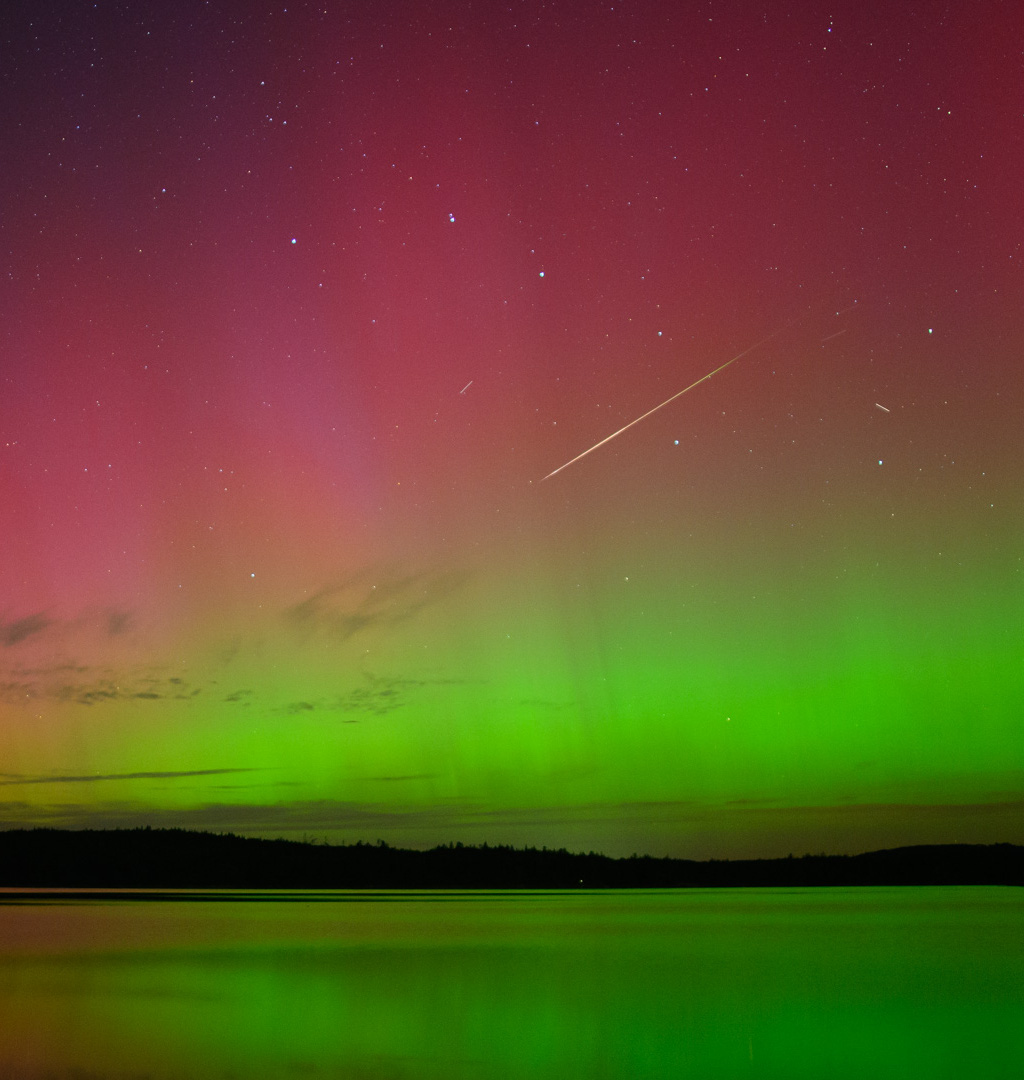Blog
Tuesday August 20th 2024
NATIONAL PUBLIC DATA-SOCIAL SECURITY NUMBER AND PERSONAL DATA BREACH EMERGENCY National Public Data a consumer data broker was hacked a few days ago and possibly 3 billion social security numbers and personal data were released to the public and the dark web. So I checked with pentester.com a cyber security company and some of my personal info appeared on the list that had been made public. As a result I froze my credit immediately, this evening, with the three main credit monitoring agencies in the USA. Experion, Equifax, and Transunion. By freezing my credit no one can steal my info and obtain assets, investments, equity or anything. Please check to see if your info was released to the public. If so freeze your information. This is unbelievable and an immediate concern to protect our security. The timing is very interesting. Is it not?
New details are emerging about a breach at National Public Data (NPD), a consumer data broker that recently spilled hundreds of millions of Americans’ Social Security Numbers, addresses, and phone numbers online. KrebsOnSecurity has learned that another NPD data broker which shares access to the same consumer records inadvertently published the passwords to its back-end database in a file that was freely available from its homepage until today.
In April, a cybercriminal named USDoD began selling data stolen from NPD. In July, someone leaked what was taken, including the names, addresses, phone numbers and in some cases email addresses for more than 272 million people (including many who are now deceased).
NPD acknowledged the intrusion on Aug. 12, saying it dates back to a security incident in December 2023. In an interview last week, USDoD blamed the July data leak on another malicious hacker who also had access to the company’s database, which they claimed has been floating around the underground since December 2023.
Following last week’s story on the breadth of the NPD breach, a reader alerted KrebsOnSecurity that a sister NPD property — the background search service recordscheck.net — was hosting an archive that included the usernames and password for the site’s administrator.
A review of that archive, which was available from the Records Check website until just before publication this morning (August 19), shows it includes the source code and plain text usernames and passwords for different components of recordscheck.net, which is visually similar to nationalpublicdata.com and features identical login pages.
The exposed archive, which was named “members.zip,” indicates RecordsCheck users were all initially assigned the same six-character password and instructed to change it, but many did not.
According to the breach tracking service Constella Intelligence, the passwords included in the source code archive are identical to credentials exposed in previous data breaches that involved email accounts belonging to NPD’s founder, an actor and retired sheriff’s deputy from Florida named Salvatore “Sal” Verini.
Reached via email, Mr. Verini said the exposed archive (a .zip file) containing recordscheck.net credentials has been removed from the company’s website, and that the site is slated to cease operations “in the next week or so.”
“Regarding the zip, it has been removed but was an old version of the site with non-working code and passwords,” Verini told KrebsOnSecurity. “Regarding your question, it is an active investigation, in which we cannot comment on at this point. But once we can, we will [be] with you, as we follow your blog. Very informative.”
The leaked recordscheck.net source code indicates the website was created by a web development firm based in Lahore, Pakistan called creationnext.com, which did not return messages seeking comment. CreationNext.com’s homepage features a positive testimonial from Sal Verini.
There are now several websites that have been stood up to help people learn if their SSN and other data was exposed in this breach. One is npdbreach.com, a lookup page erected by Atlas Data Privacy Corp. Another lookup service is available at npd.pentester.com. Both sites show NPD had old and largely inaccurate data on Yours Truly.
The best advice for those concerned about this breach is to freeze one’s credit file at each of the major consumer reporting bureaus. Having a freeze on your files makes it much harder for identity thieves to create new accounts in your name, and it limits who can view your credit information.
A freeze is a good idea because all of the information that ID thieves need to assume your identity is now broadly available from multiple sources, thanks to the multiplicity of data breaches we’ve seen involving SSN data and other key static data points about people.
There are numerous cybercriminal services that offer detailed background checks on consumers, including full SSNs. These services are powered by compromised accounts at data brokers that cater to private investigators and law enforcement officials, and some are now fully automated via Telegram instant message bots.
In November 2023, KrebsOnSecurity wrote about one such service, which was being powered by hacked accounts at the U.S. consumer data broker USInfoSearch.com. This is notable because the leaked source code indicates Records Check pulled background reports on people by querying NPD’s database and records at USInfoSearch. KrebsOnSecurity sought comment from USInfoSearch and will update this story if they respond.
The point is, if you’re an American who hasn’t frozen their credit files and you haven’t yet experienced some form of new account fraud, the ID thieves probably just haven’t gotten around to you yet.
All Americans are also entitled to obtain a free copy of their credit report weekly from each of the three major credit bureaus. It used to be that consumers were allowed one free report from each of the bureaus annually, but in October 2023 the Federal Trade Commission announced the bureaus had permanently extended a program that lets you check your credit report once a week for free.
If you haven’t done this in a while, now would be an excellent time to order your files. To place a freeze, you’ll need to create an account at each of the three major reporting bureaus, Equifax, Experian and TransUnion. Once you’ve established an account, you should be able to then view and freeze your credit file. If you spot errors, such as random addresses and phone numbers you don’t recognize, do not ignore them. Dispute any inaccuracies you may find.

Inside the Cocoon Nebula is a newly developing cluster of stars. Cataloged as IC 5146, the beautiful nebula is nearly 15 light-years wide. Soaring high in northern summer night skies, it’s located some 4,000 light years away toward the constellation of the Swan (Cygnus). Like other star forming regions, it stands out in red, glowing, hydrogen gas excited by young, hot stars, and dust-reflected starlight at the edge of an otherwise invisible molecular cloud. In fact, the bright star found near the center of this nebula is likely only a few hundred thousand years old, powering the nebular glow as it clears out a cavity in the molecular cloud‘s star forming dust and gas. A 48-hour long integration resulted in this exceptionally deep color view tracing tantalizingfeatures within and surrounding the dusty stellar nursery.

more...
Robert Anthony Plant CBE (born 20 August 1948) is an English singer and songwriter. He was the lead singer and lyricist of the rock band Led Zeppelin from its founding in 1968 until their breakup in 1980; since then he has had a successful solo career, sometimes collaborating with other artists such as Alison Krauss. Regarded by many as one of the greatest singers in rock music, he is known for his flamboyant persona and raw stage performances.
Plant was born and brought up in the West Midlands area of England, where after leaving grammar school he briefly trained as a chartered accountant before leaving home at 16 years old to concentrate on singing with a series of local blues bands, including Band of Joy with John Bonham. In 1968, he was invited by Peter Grant and Jimmy Page to join The Yardbirds, which Grant and Page were attempting to keep going. The new version of The Yardbirds changed their name to Led Zeppelin, and from the late 1960s to the end of the 1970s the band enjoyed considerable success.
Plant developed a compelling image as a charismatic rock-and-roll front man, comparable to other 70’s contemporaries such as Mick Jagger of the Rolling Stones, Roger Daltrey of the Who, and Jim Morrison of the Doors. After Led Zeppelin dissolved in 1980, Plant continued to perform and record continuously on a variety of solo and group projects. His first two solo albums, Pictures at Eleven (1982) and The Principle of Moments(1983), each reached the top ten on the Billboard albums chart. With his band The Honeydrippers he scored a top-ten singles hit with a remake of “Sea of Love“, which featured former Led Zeppelin bandmate Jimmy Page on guitar. Solo album Now and Zen (1988) was certified 3× Platinum and is Plant’s biggest-selling solo album to date. In the 1990s, another reunion project called Page and Plant released two albums and earned a Grammy Award for Best Hard Rock Performance in 1998 for “Most High“. In 2007, Plant began a collaboration with bluegrass artist Alison Krauss, releasing the album Raising Sand, which won the Grammy Award for Album of the Year in 2009 and produced the hit song “Please Read the Letter“, which won the Grammy Award for Record of the Year the same year. In 2010, he revived the Band of Joy (which shared its name with an early band he performed with in the 1960s), and in 2012 formed a new band, the Sensational Space Shifters, followed by a reunion with Alison Krauss in 2019.
In 1995, Led Zeppelin were inducted into the Rock and Roll Hall of Fame. Rolling Stone ranked Plant as one of the 100 best singers of all time (2008); and he was the top pick for the greatest lead singer in a 2011 readers poll. Hit Parader named Plant the “Greatest Metal Vocalist of All Time” (2006).Plant was named one of the 50 Great Voices by NPR. In 2009, Plant was voted “the greatest voice in rock” in a poll conducted by UK classic rock radio station Planet Rock. Billboard ranked him number 4 on their list of The 50 Greatest Rock Lead Singers of All Time (2023).
more...Isaac Lee Hayes Jr. (August 20, 1942 – August 10, 2008) was an American singer, songwriter, composer, and actor. He was one of the creative forces behind the Southern soul music label Stax Records, serving as both an in-house songwriter and as a session musician and record producer, teaming with his partner David Porterduring the mid-1960s. Hayes and Porter were inducted into the Songwriters Hall of Fame in 2005 in recognition of writing scores of songs for themselves, the duo Sam & Dave, Carla Thomas, and others. In 2002, Hayes was inducted into the Rock and Roll Hall of Fame.
“Soul Man,” written by Hayes and Porter and first performed by Sam & Dave, was recognized as one of the most influential songs of the past 50 years by the Grammy Hall of Fame. It was also honored by The Rock and Roll Hall of Fame, by Rolling Stone magazine, and by the Recording Industry Association of America (RIAA) as one of the Songs of the Century. During the late 1960s, Hayes also began a career as a recording artist. He had several successful soul albums such as Hot Buttered Soul(1969) and Black Moses (1971). In addition to his work in popular music, Hayes worked as a composer of musical scores for motion pictures.
Hayes was known for his musical score for the film Shaft(1971). For the “Theme from Shaft,” he was awarded the Academy Award for Best Original Song in 1972, making him the third black person, after Hattie McDaniel and Sidney Poitier, to win an Academy Award in any competitive field covered by the Academy of Motion Picture Arts and Sciences. Hayes also won two Grammy Awards for that same year. Later, he was given his third Grammy for his music album Black Moses.
In 1992, Hayes was crowned honorary king of the Adaregion of Ghana in recognition of his humanitarian work there. He acted in motion pictures and television, such as in the movies Truck Turner, Escape from New Yorkand I’m Gonna Git You Sucka, and as Gandolf “Gandy” Fitch in the TV series The Rockford Files (1974–1980). Hayes also voiced the character Chef from the Comedy Central animated series South Park from its debut in 1997 until his controversial departure in 2006.
On August 5, 2003, Hayes was honored as a BMI Icon at the 2003 BMI Urban Awards for his enduring influence on generations of music makers. Throughout his songwriting career, Hayes received five BMI R&B Awards, two BMI Pop Awards, two BMI Urban Awards and six Million-Air citations. As of 2008, his songs had generated more than 12 million performances.
more...José Luis Cantero Rada (August 20, 1937 – June 19, 2007), known professionally as El Fary, was a Spanish singer and actor.
The youngest of six children, José Luis Cantero was born in Madrid, close to a famous bullring. As a boy he would play truant from school, preferring to spend time partying with Gypsies imitating his idol, the traditional “copla” singer Rafael Farina. It was from Farina that Cantero adopted his stage name of “El Fary”. Resolute that his shortness would not stand in the way of success he was determined that his dream of following in his idol’s footsteps would one day come true. It was during the military service (late 1950s) that he would finally learn to read and write.
Before hitting the big time, El Fary worked hard as a gardener and a taxi driver in order to make the money to record his first songs. As a taxi driver, he claimed to have driven the American actress Ava Gardner around Madrid.
Once he had recorded and pressed these songs – rumourhas it – he sold them to the public himself from a stall in the Rastro (Madrid’s weekly street market). At this time he also took part in singing contests on the radio and performed at local fiestas. Only when he was in his early thirties did El Fary start to make money as a singer when he was called to stand in for Pepe Blanco at a show in Pozoblanco, Córdoba, Andalusia. Later, the legendary Antonio Molina hired him for a two-month tour.
By the 1970s the copla had fallen from favour with the Spanish record-buying public, but this did not dampen El Fary’s enthusiasm and by the end of the decade he was recording poppier songs such as Gypsy rumbas that found a home in the Spanish hit parade.
more...Frank Rosolino (August 20, 1926 – November 26, 1978) was an American jazz trombonist. Rosolino was born in Detroit, Michigan, United States, He performed with the big bands of Bob Chester, Glen Gray, Tony Pastor, Herbie Fields, Gene Krupa, and Stan Kenton. After a period with Kenton he settled in Los Angeles, where he performed with Howard Rumsey‘s Lighthouse All-Stars (1954–1960) in Hermosa Beach.
more...Resting near the centre of the northerly constellation Cepheus, high in the northern sky, is the barred spiral galaxy UGC 11861, the subject of the latest Hubble Picture of the Week.
UGC 11861 is located 69 million light-years away from Earth — which may seem a vast distance, but it’s just right for Hubble to grab this majestic shot of the galaxy’s spiral arms and the short but brightly glowing bar in its centre. Among the cloudy gases and the dark wisps of dust, this galaxy is actively forming new stars, visible in the glowing blue patches in its outer arms.
This activity has resulted in three supernova explosions being spotted in and nearby UGC 11861, in 1995, 1997 and 2011. The earlier two were both Type II supernovae, a kind which results from the collapse of a massive starat the end of its life. This Hubble image was made from data collected to study Type II supernovae and their environments.
[Image Description: A spiral galaxy with two broad spiral arms wrapping around a large central region, which has a glowing white bar in the very centre. Thin strands of dark dust lie over much of the galaxy. The arms have small and large patches of glowing blue light, emitted by new stars. The galaxy is on a dark background. In the foreground, bright stars with four points are dotted around.]

John Lester Nash Jr. (August 19, 1940 – October 6, 2020 Houston, TX) was an American singer and songwriter, best known in the United States for his 1972 hit “I Can See Clearly Now“. Primarily a reggae and pop singer, he was one of the first non-Jamaican artists to record reggae music in Kingston.
more...Fumio Hayasaka (早坂 文雄 Hayasaka Fumio; August 19, 1914 – October 15, 1955) was a Japanese composer of classical music and film score.
Hayasaka was born in the city of Sendai on the main Japanese island of Honshū. In 1918, Hayasaka and his family moved to Sapporo on the northern island of Hokkaidō. In 1933, Hayasaka and Akira Ifukube organized the New Music League, which held a new music festival the year after.
Hayasaka won a number of prizes for his early concert works; in 1935, his piece Futatsu no sanka e no zensōkyoku won first prize in a radio competition, and another concert piece, Kodai no bukyoku, won the 1938 Weingartner Prize. Other early works include a Nocturne (1936) for piano and the orchestral Ancient Dance (1938). In 1939, Hayasaka moved to Tokyo to begin a career as film composer. By early 1940, Hayasaka was seen as “a major composer for Japanese Cinema”.
more...Edward Durham (August 19, 1906 – March 6, 1987 San Marcos, TX) was an American jazz guitarist, trombonist, composer, and arranger. He was one of the pioneers of the electric guitar in jazz. The orchestras of Bennie Moten, Jimmie Lunceford, Count Basie, and Glenn Miller took great benefit from his composing and arranging skill.
With Edgar Battle he composed “Topsy“, which was recorded by Count Basie and became a hit for Benny Goodman.
In 1938, Durham wrote “I Don’t Want to Set the World on Fire” with Bennie Benjamin, Sol Marcus, and Eddie Seiler. During the 1940s, Durham created Eddie Durham’s All-Star Girl Orchestra, an African-American all female swing band that toured the United States and Canada.
more...Peter Edward “Ginger” Baker (19 August 1939 – 6 October 2019) was an English drummer. His work in the 1960s and 1970s earned him the reputation of “rock’s first superstar drummer”, for a style that melded jazz and African rhythms and pioneered both jazz fusion and world music.
Baker gained early fame as a member of Blues Incorporated and the Graham Bond Organisation, both times alongside bassist Jack Bruce, with whom Baker would often clash. In 1966, Baker and Bruce joined guitarist Eric Clapton to form Cream, which achieved worldwide success but lasted only until 1968, in part due to Baker’s and Bruce’s volatile relationship. After working with Clapton in the short-lived band Blind Faith and leading Ginger Baker’s Air Force, Baker spent several years in the 1970s living and recording in Africa, often with Fela Kuti, in pursuit of his long-time interest in African music. Among Baker’s other collaborations are his work with Gary Moore, Masters of Reality, Public Image Ltd, Hawkwind, Atomic Rooster, Bill Laswell, jazz bassist Charlie Haden, jazz guitarist Bill Frisell, and Ginger Baker’s Energy.
Baker’s drumming is regarded for its style, showmanship, and use of two bass drumsinstead of the conventional single one, after the manner of the jazz drummer Louie Bellson. In his early days, he performed lengthy drum solos, most notably in the Cream song “Toad“, one of the earliest recorded examples in rock music. Baker was an inductee of the Rock and Roll Hall of Fame as a member of Cream in 1993, of the Modern Drummer Hall of Fame in 2008, and of the Classic Drummer Hall of Fame in 2016.[5] Baker was noted for his eccentric, often self-destructive lifestyle, and he struggled with heroin addiction for many decades. He was married four times and fathered three children.
more...James George Hunter (August 19, 1918 – May 28, 1996), known professionally as Jimmy Rowles (sometimes spelled Jimmie Rowles), was an American jazz pianist, vocalist, and composer. As a bandleader and accompanist, he explored multiple styles including swing and cool jazz.
Rowles was born in Spokane, Washington, and attended Gonzaga University in that city. After moving to Los Angeles, he joined Lester Young‘s group in 1942. He also worked with Benny Goodman, Woody Herman, Les Brown, Tommy Dorsey, and Tony Bennett, and as a studio musicians.
Rowles was praised as an accompanist by female singers. He recorded Sarah Vaughan with the Jimmy Rowles Quintet with Sarah Vaughan and accompanied Carmen McRae on her 1972 live album The Great American Songbook. McRae described Rowles as “the guy every girl singer in her right mind would like to work with”.
more...A single exposure made with a camera pointed almost due north on August 12 recorded this bright Perseid meteor in the night sky west of Halifax, Nova Scotia, Canada. The meteor’s incandescent trace is fleeting. It appears to cross the stars of the Big Dipper, famous northern asterism and celestial kitchen utensil, while shimmering curtains of aurora borealis, also known as the northern lights, dance in the night. Doubling the wow factor for night skywatchers near the peak of this year’s Perseid meteor shower auroral activity on planet Earth was enhanced by geomagnetic storms. The intense space weather was triggered by flares from an active Sun.

More Posts
- Community Band Rehearsal 4-20-19 1-3pm
- The Cosmos with M78
- Stephen Marley Day
- Tito Puente Day
- Lionel Hampton Day
- World Music with Fadhilee Itulya
- Daily Roots with Hugh Godfrey
- The Cosmos with Maffei 1&2
- Bernie Worrell Day
- Dudley Moore Day
- World Music with PERLITA DE HUELVA y RAFAEL HIDALGO ROMERO
- Daily Roots with Cornell Campbell
- Voices of Sepharad on Maundy Thursday 4-18-19
- The Cosmos with NGC 4394
- Clyde Stubblefield Day
- Clarence Gatemouth Brown Day
- Little Brother Montgomery Day
- World Music with Zohreh Jooya
- Daily Roots with the Gladiators
- The Cosmos with M81

